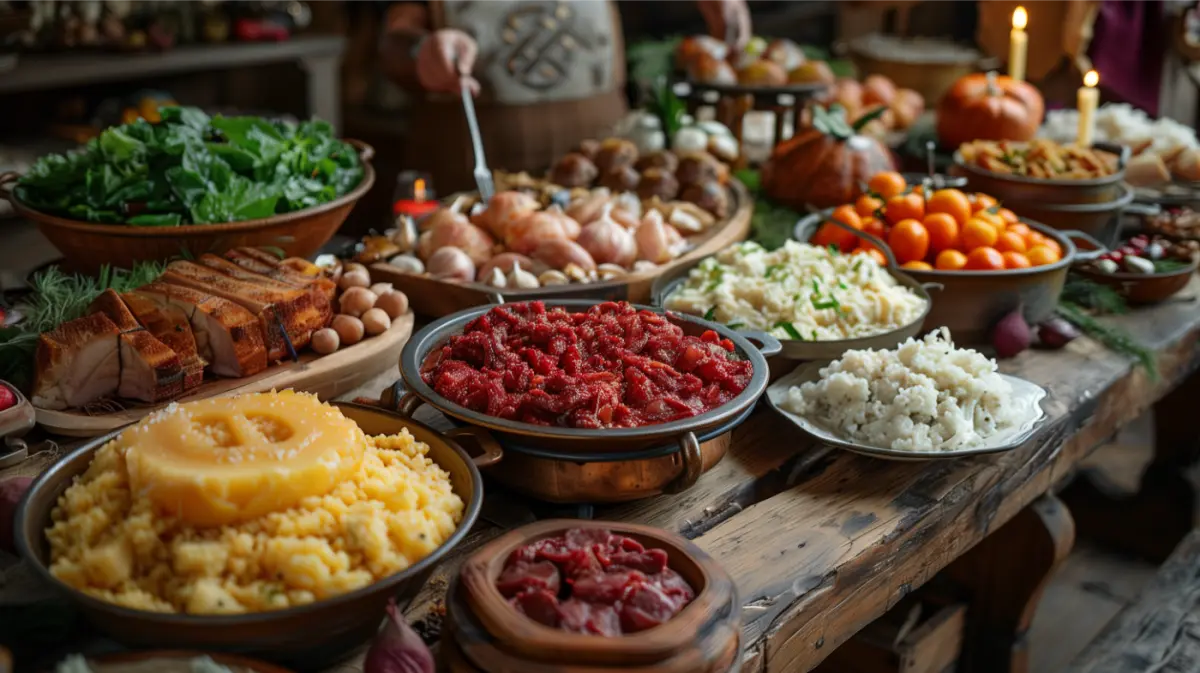6 Bizarre Viking Foods We Couldn't Stomach Today

Let's explore the fascinating and often unappetizing diet of the Vikings, known for their resilience and adaptability. Their culinary practices included some rather unusual dishes that helped them survive the harsh conditions of their voyages and settlements. Here are 6 of the strangest foods consumed by the Vikings:
6. Rotten Shark Meat
Imagine starting with something as formidable as hákarl, or fermented shark meat. This Icelandic "delicacy" involved a unique preparation method where a Greenland shark carcass was buried underground to ferment for a few months. The process resulted in a pungent dish that had a very strong taste, akin to a mix between ripe cheese and ammonia cleaner. Vikings would bury the shark, weigh it down with stones, and let it ferment. Despite its overwhelming odor, this fermented shark was consumed to help get through the winter months, demonstrating a remarkable level of culinary bravery or desperation.
5. Blood Puddings
Vikings were practical and wasted no part of the animals they hunted or raised, including blood. Blood puddings and panpudding were made by mixing fresh blood with a thickener, resulting in a dark, dense dish. This use of blood as a key ingredient showcased their efficiency and resourcefulness, turning what could be wasted into a valuable source of protein.

4. Whey Cheese
On their long voyages, Vikings required food that could last without refrigeration, which led to the creation of brunost, or whey cheese. This cheese was made by reducing a salty whey solution until it caramelized into a firm, yellow block. Its sweet, nutty, and salty flavor made it a durable food choice for seafaring Norsemen, providing a much-needed energy boost in a compact form.
3. Grilled Salt Cod
To preserve fish for their voyages, Vikings salt-cured cod, turning it into a durable, non-perishable food item. When ready to eat, the cod was rehydrated and grilled, offering a smoky and protein-rich meal. This method of fish preservation was crucial for their diet, especially during long journeys at sea.
2. Oat Porridge
A staple in the Viking diet was oat porridge, a simple yet nourishing meal that could be enhanced with nuts, berries, or lard. While not particularly glamorous, this dish provided essential nutrients and a warm start to a cold day. The preparation of oat porridge was a common practice in Viking households, reflecting the importance of hearty, filling meals in their daily life.
1. Pine Bark Bread
In times of grain scarcity, Vikings resorted to incorporating pine bark into their bread. Mixed with seeds, berries, and moss, the resulting loaf was dense and earthy, requiring thorough baking to soften the tough bark fibers. This resourceful use of available ingredients highlights the Vikings' adaptability and their ability to survive on whatever the land offered, even when traditional food sources were limited.
The Viking diet, marked by these unusual and often unappetizing foods, illustrates their incredible resilience and ingenuity. From fermented shark to bark bread, these dietary practices enabled them to thrive in some of the harshest conditions, leaving a legacy that fascinates us to this day.
